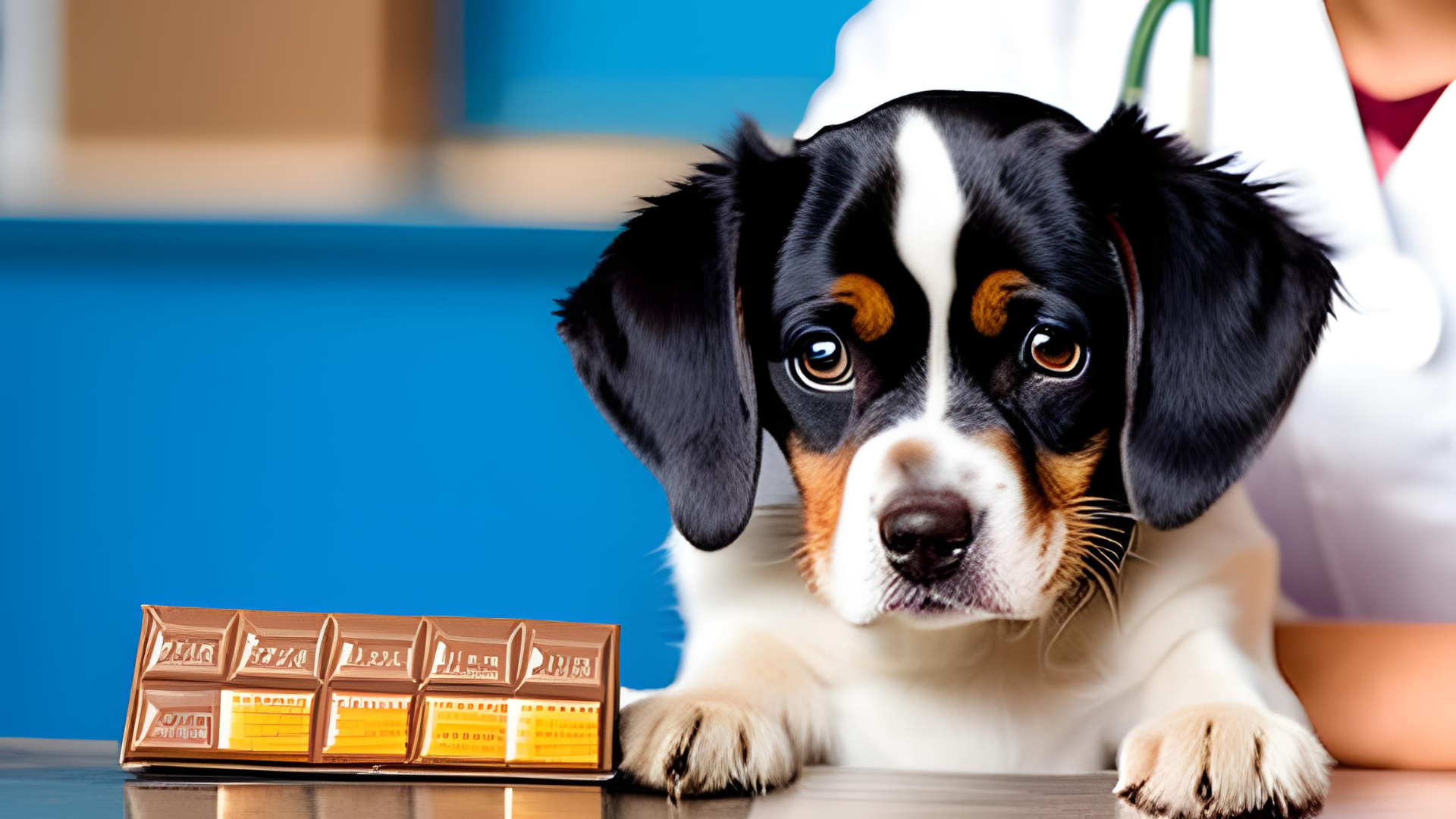What To Do If Your Pet Has Ingested Chocolate
Chocolate is a beloved treat for humans but can pose a hidden danger for our canine companions. Canine chocolate poisoning can cause various symptoms, from mild to severe. This blog post will discuss the danger of chocolate poisoning in dogs, what to watch for, and what to do if your pet has ingested chocolate. Additionally, we will provide tips to prevent chocolate poisoning from happening in the first place. By reading this post, you will know what to do if your pet eats chocolate and how to prevent it from happening again.


The Hidden Dangers of Chocolate Poisoning in Dogs: Protect Your Pet Today.
Chocolate Poisoning In Dogs: Prevention And Symptoms
It is a common misconception that chocolate is safe for dogs, but it can be deadly if dogs eat chocolate. Small amounts of chocolate can lead to chocolate poisoning in dogs. Chocolate contains a stimulant called Theobromine, similar to caffeine and poisonous to dogs.
Dark chocolate has the most Theobromine, and white chocolate has very little. To prevent chocolate poisoning in dogs, the best thing to do is to keep it away from them as much as possible. Store all chocolates, candy bars, cookies, etc., in child-proof containers to ensure no curious dog can reach them. Additionally, keep food wrappers away from
If you suspect your dog has ingested chocolate, contact your vet immediately for advice. Symptoms may appear 4-24 hours after ingestion, including heart rate abnormalities, tremors/seizures, hyperactivity or depression, and vomiting/diarrhea. Depending on the severity of symptoms, your vet may recommend hospitalization or even a blood transfusion in extreme cases of anemia due to red blood cell destruction by Theobromine toxicity.
To reduce the risk of poisoning, keep all cocoa-based products away from pets, even if out of reach. Ensure children understand that food intended for humans should not be given to animals as too much sugar can cause health problems such as diabetes or obesity in pets, just like it does in people. Remember, prevention is better than cure, so take action today to help keep your furry friends safe tomorrow.
If you believe your dog has consumed chocolate, it is essential to monitor their behavior closely over the next few days and immediately discontinue giving any further chocolate.
Symptoms of Theobromine poisoning may include restlessness, excessive panting, rapid breathing, an increased heartbeat and blood pressure, dehydration, and vomiting. If these symptoms are observed, contact your vet immediately or seek medical help. Depending on the amount of Theobromine consumed and the size of your pet, the course of action may differ.
Your vet may provide an oral antacid to assist digestion and an activated charcoal solution to absorb the Theobromine and reduce the rate at which it is absorbed into your pet’s bloodstream. Depending on the severity of your pet’s condition, hospitalization may be necessary. In some cases, intravenous fluids, electrolyte balancing, and blood glucose monitoring may be prescribed.
To Wrap Things Up
Chocolate poisoning in dogs is a serious issue that can be easily prevented. Knowing the signs of chocolate poisoning in dogs and being aware of its associated risks are key steps to take to protect your furry friends. With proper knowledge and prevention practices, you can keep your pet safe from potential dangers, such as chocolate poisoning.
By taking action today and ensuring that all cocoa-based products are kept away from pets, you can help prevent a potentially tragic situation for your beloved companion. If your dog does happen to get into a situation where they are exposed to chocolate, it is important to seek immediate medical attention. If your dog is experiencing symptoms of chocolate poisoning, such as vomiting, lethargy, increased thirst, hyperactivity, or diarrhea, consult with a veterinarian immediately.
If left untreated, chocolate poisoning can lead to irreversible damage to your dog, potentially resulting in death. Therefore, it is important to stay vigilant and take all necessary steps to ensure your dog stays safe. By keeping chocolate away from dogs, regularly checking your pet for signs of toxicity, and being aware of the risks associated with chocolate, you can protect your furry friend from potentially dangerous consequences. Additionally, it is important to remain diligent in administering your pet’s regular veterinarian checkups, ensuring they stay current on their vaccinations and health checkups. With a few simple steps and precautions, you can help ensure your pet is protected and can live a long and healthy life.
Owning a pet comes with many wonderful rewards and great responsibilities. From proper exercise and nutrition to filing their nails and maintaining a regular grooming routine, there is much to consider when providing the best care for your four-legged family member. As such, it is important to know the health risks associated with certain foods, including chocolate. By educating yourself on the dangers of chocolate poisoning, you can be sure to keep your pet safe from this potentially deadly consequence.
